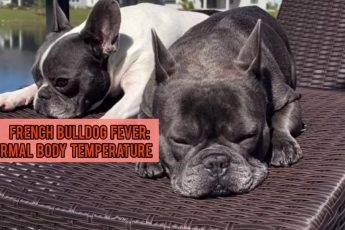
Embarking on the exhilarating adventure of raising a puppy can be a joyous and transformative experience. As time passes, a precious puppy gradually evolves into a mature and self-assured adult dog. This remarkable metamorphosis marks the transition from the puppy stage to adulthood, presenting pet owners with unique challenges and rewards.
During this enchanting journey, puppies embark on a voyage of self-discovery, navigating a myriad of remarkable experiences that ultimately shape their character. Like blossoming flowers, they eagerly soak up the world around them, eagerly embracing new sensations, sights, and smells. Guided by their innate curiosity, puppies leap from one playful adventure to another, forging connections and creating memories along the way.
This pivotal juncture in a dog’s life brings with it a series of changes that separate the puppyhood from the beautiful maturation into adulthood. From physical developments such as growth spurts and the acquisition of adult teeth, to emotional and behavioral adjustments, this transformative period is a whirlwind of evolution.
Such a journey is not without its challenges! Pet owners may find themselves perplexed as they witness their once obedient and carefree puppy test boundaries and assert their independence. Understanding these dynamics and adapting to the evolving needs of a maturing puppy is crucial in fostering a strong and lasting bond.
Join us on an exploratory expedition into the intriguing realm of transitioning from puppyhood to adulthood, unveiling the mysteries behind the end of the puppy stage. Together, we will unravel the complexities of this remarkable transformation, and equip ourselves with the knowledge and tools to navigate this transitional period with grace and compassion.
- Developmental Milestones in Puppyhood
- Socialization:
- Teething:
- Key stages in a puppy’s early life and their significance
- Physical Changes in a Maturing Puppy
- Size and Weight
- Coat and Fur
- How a puppy’s body develops as it matures
- Behavioral Shifts in the Adolescent Phase
- Exploring the changes in a puppy’s behavior as it grows into adulthood
- 1. Social Integration
- 2. Independence and Confidence
- 3. Development of Behavioral Patterns
- Nutritional Needs during the Transition Period
- 1. Essential Nutrients for Growth and Development
- 2. The Importance of a Balanced Diet
- Understanding the dietary needs of a puppy during its transition to maturity
- Question-answer
- At what age does the puppy stage typically end?
- What are some common signs that a puppy is transitioning into adulthood?
- How can I help my puppy make a smooth transition into adulthood?
- Is it normal for puppies to show some regressive behavior during the transition to adulthood?
- What are the potential health concerns to watch for during the transition from puppyhood to adulthood?
- What age is considered the end of the puppy stage?
Developmental Milestones in Puppyhood
As puppies grow and develop, they reach important milestones that mark various stages of their physical and cognitive development. These milestones are crucial indicators of a puppy’s progress and can help owners understand and support their puppy’s unique journey from infancy to adolescence. In this section, we will explore the significant developmental milestones that puppies experience during their early months of life.
Socialization:
Socialization plays a vital role in a puppy’s development, as it helps them learn about appropriate behaviors, communicate with other dogs, and interact with humans. During this stage, puppies begin to explore their environment, meet new people and animals, and start to learn how to navigate social interactions. It is important for owners to expose their puppies to various stimuli and provide positive and safe experiences to promote healthy socialization.
Teething:
Teething is a milestone that all puppies go through as they transition from their puppy teeth to their adult teeth. This process can be uncomfortable and may lead to increased chewing behavior as puppies seek relief. Providing appropriate chew toys and regular dental care can help alleviate teething discomfort and protect the puppy’s dental health.
By understanding and supporting these developmental milestones, owners can ensure that their puppies receive the proper care and guidance needed for a healthy transition from puppyhood to adulthood.
Key stages in a puppy’s early life and their significance
Significant milestones mark a puppy’s journey from infancy to adulthood, each stage vital for their physical, mental, and emotional development. Understanding these key stages helps us comprehend the intricate process through which a young puppy matures. From the fragile beginnings of birth to the discovery of their surroundings, puppies undergo several remarkable transformations that shape their future as adult dogs.
The Stage of Neonatal Development:
During the neonatal stage, puppies rely entirely on their mother for warmth, sustenance, and protection. They are born blind, deaf, and toothless, making them vulnerable and dependent on their mother’s care. This delicate period is characterized by rapid growth and the crucial bonding between the puppy and its mother, laying the foundation for their emotional security.
The Transitional Stage:
As a puppy enters the transitional stage, their senses start to develop rapidly. Their eyes gradually open, allowing them to perceive the world around them, while their hearing and sense of smell becomes more refined. This stage also marks the emergence of teeth, enabling the introduction of solid food and the beginning of the weaning process. Socialization becomes crucial during this period, as puppies start engaging with their littermates and learning essential communication skills.
The Socialization Phase:
When the socialization phase begins, puppies become more independent, curious, and receptive to their surroundings. They become increasingly aware of their littermates and develop a sense of hierarchy within the pack. Interactions with humans, introducing them to different environments, and exposing them to various stimuli are essential during this phase to promote their adaptability, confidence, and ability to form healthy relationships.
Adolescence and Maturity:
During adolescence, puppies start resembling adult dogs physically, undergoing significant growth spurts and hormonal changes. This period can be challenging, as they may exhibit increased independence, testing boundaries, and displaying secondary sexual behaviors. Adequate guidance, consistent training, and patience are crucial to navigate through this transitional phase and help puppies become well-rounded and balanced adult dogs.
Understanding these key stages and their significance empowers pet owners to provide appropriate care, tailored training, and socialization experiences to promote the healthy development and well-being of their puppies. By recognizing the unique needs of each stage, we can ensure a smooth and successful transition from puppyhood to adulthood for our beloved furry companions.
Physical Changes in a Maturing Puppy
As a young puppy grows into adulthood, their physical appearance undergoes significant transformations. These changes encompass various aspects of their body, including size, weight, coat, and overall physique. Understanding and observing these physical developments can help pet owners provide adequate care and ensure the well-being of their maturing furry companions. In this section, we will delve into the distinct physical changes that occur during the transition from puppyhood to adulthood.
Size and Weight
One notable physical change in a maturing puppy is the increase in size and weight. Just like teenagers experience growth spurts, puppies also go through rapid growth phases during their adolescence. Their bones elongate and thicken, leading to a significant increase in their overall size. As a result, during this period, it is common for puppies to outgrow their collars and require frequent adjustments to accommodate their growing bodies. Additionally, their weight also increases steadily as they develop muscle mass and fill out their frame.
Coat and Fur
The transition from puppyhood to adulthood brings about changes in a puppy’s coat. Puppies often have a soft and fluffy fur texture as they navigate their early weeks, but as they mature, their fur undergoes significant alterations. The texture may become coarser, and the puppy’s coat may start developing a more adult-like appearance. Furthermore, changes in coloration or markings may also occur, leading to a variation in their physical appearance as they continue to mature.
| Physical Changes | Description |
|---|---|
| Size and Weight | Increase in overall size and weight due to rapid growth and muscle development. |
| Coat and Fur | Transition from soft and fluffy puppy fur to a coarser, more adult-like coat with possible changes in coloration. |
By understanding the physical changes that occur during the transition from puppyhood to adulthood, pet owners can be better prepared to provide appropriate care and address any concerns that may arise. Regular veterinarian check-ups and a proper diet can support the healthy development of a maturing puppy as they journey towards becoming a fully-grown adult dog.
How a puppy’s body develops as it matures
As a puppy transitions into adulthood, its physical appearance and overall body structure undergo significant changes. This evolution is a natural and crucial part of a dog’s development, enabling them to navigate the challenges of adult life.
During the early stages of its growth, a puppy’s body proportions gradually shift. The once small and compact frame begins to elongate, with the limbs becoming more defined. The growth plates in the bones start to close, allowing for increased stability and strength. This transformation is essential for the puppy to support its increasing weight and engage in more demanding physical activities.
Alongside skeletal changes, a puppy’s muscular system also undergoes development. The muscles strengthen and bulk up, providing the dog with more power and agility. The puppy’s musculature adapts to the demands of adulthood, enabling it to engage in activities such as running, jumping, and playing with increased endurance.
As the puppy’s body matures, the reproductive system also experiences transformative changes. In males, the testes descend, and the external genitalia become fully developed, allowing them to reproduce. In females, the reproductive organs gradually mature, preparing them for the possibility of pregnancy and nursing.
Additionally, the puppy’s appearance further evolves as it transitions into adulthood. The puppy coat, often characterized by its softness and fluffy texture, undergoes a change known as “coat blow.” As the adult coat grows in, the puppy fur is shed, revealing a more mature and often thicker coat. The color and patterns of the coat may also develop and become more distinct, contributing to the dog’s unique appearance.
In conclusion, a puppy’s body undergoes a remarkable and intricate evolution as it grows into adulthood. From the shifting body proportions to the strengthening muscles and maturing reproductive system, each change enables the dog to adapt and thrive as an adult. Understanding this progression aids in providing appropriate care and meeting the specific needs of growing puppies.
Behavioral Shifts in the Adolescent Phase
In the journey from puppyhood to adulthood, dogs go through a transformative phase known as adolescence. During this period, there are significant changes in their behavior and development as they transition from being dependent puppies to independent adults. This phase can be characterized by distinctive shifts in their attitudes, energy levels, and interactions with both humans and other animals. Understanding these behavioral changes is crucial for pet owners to provide the appropriate care and guidance to their adolescent dogs.
To begin with, one notable behavioral shift in the adolescent phase is an increased desire for autonomy. Dogs at this stage start to display more independent behaviors and seek greater control over their environment. They may become more stubborn and push boundaries as they test their newfound independence. This can manifest in behaviors such as ignoring commands, exhibiting selective listening, or even engaging in mild acts of rebellion. It is important for dog owners to establish firm and consistent boundaries while also allowing their adolescent dogs to explore their independence within reasonable limits.
Alongside the increased desire for autonomy, adolescent dogs often experience fluctuations in energy levels. While some may become more energetic and display bursts of hyperactivity, others may exhibit periods of laziness or decreased motivation. These shifts in energy can be attributed to hormonal changes and the ongoing neural development during this phase. Providing an appropriate amount of physical and mental stimulation is crucial to ensure that adolescent dogs can channel their energy in productive ways while avoiding destructive behaviors or frustration.
Furthermore, the adolescent phase is marked by changes in social interactions. Dogs in this stage often demonstrate a heightened interest in exploring their social circle, which includes both other dogs and humans. They may exhibit more exuberant greetings, engage in playful behavior with peers, and display a greater curiosity towards unfamiliar individuals. Dog owners should facilitate positive socialization experiences during this time to help their adolescent dogs develop good manners, proper social skills, and maintain positive relationships with both human and canine companions.
In summary, the adolescent phase of a dog’s development is characterized by various behavioral shifts that reflect their transition from puppyhood to adulthood. Understanding and addressing these changes is essential for owners to provide appropriate guidance, structure, and support to their adolescent dogs during this crucial stage of development.
Exploring the changes in a puppy’s behavior as it grows into adulthood

During a puppy’s journey from infancy to adulthood, significant changes occur in its behavior and overall development. This article aims to shed light on the various transitions that take place as a puppy matures into an adult dog, offering valuable insights into their physical, mental, and emotional growth.
1. Social Integration

As puppies transition into adulthood, their social behaviors undergo a noticeable transformation. They begin to develop a better understanding of social cues and hierarchies within their pack or human family. This involves learning to navigate interactions with other dogs and humans, becoming less reliant on their mother or primary caregiver.
2. Independence and Confidence
As puppies mature, they gradually become more independent and confident in exploring their surroundings. They develop a sense of adventure, seeking out new experiences and venturing further from their comfort zones. Their curiosity drives them to become more self-reliant, testing their limits and pushing boundaries.
Additionally, as puppies grow older, they become more confident in expressing their needs and desires. They develop stronger communication skills, such as barking or body language, to convey their intentions and assert themselves in various situations.
3. Development of Behavioral Patterns
As a puppy transitions into adulthood, notable changes occur in their behavior patterns. They start to display more consistent and predictable actions, exhibiting behaviors that align with their breed characteristics or individual personality traits. This consistency allows their owners or handlers to better understand and anticipate their needs and preferences.
Furthermore, as puppies mature, they tend to display a reduction in impulsive behaviors and a better ability to control their impulses. They gradually gain a better grasp of acceptable manners and appropriate behaviors in different contexts, such as during mealtime, playtime, and social interactions.
In summary, a puppy’s journey from puppyhood to adulthood is marked by significant behavioral changes. The transition involves social integration, developing independence, and confidence, as well as the establishment of consistent behavioral patterns. Understanding these changes can enable owners and handlers to support and nurture their puppy’s healthy development.
Nutritional Needs during the Transition Period
Ensuring proper nutrition is crucial during the period when puppies are transitioning into adulthood. This stage is characterized by significant physiological and behavioral changes, necessitating a tailored approach to their dietary needs. Providing the right balance of essential nutrients is essential for promoting healthy growth, development, and overall well-being.
1. Essential Nutrients for Growth and Development
During the transition period, puppies experience rapid growth and development. As a result, their nutritional requirements are different from those of adult dogs. They need adequate amounts of proteins, carbohydrates, and fats to support muscle and tissue formation, provide energy, and maintain healthy body functions. Additionally, essential vitamins, minerals, and antioxidants are vital for promoting proper organ development, bone growth, and a strong immune system.
2. The Importance of a Balanced Diet

A balanced diet is crucial during the transition period as it ensures puppies receive all the necessary nutrients in the right proportions. Feeding a high-quality commercial puppy food is recommended as it is specifically formulated to meet their unique nutritional needs. It is important to read and follow the feeding guidelines provided on the packaging, adjusting portion sizes as puppies grow. Including a variety of protein sources, such as meat, fish, and poultry, along with a mix of vegetables and grains, helps provide a diverse range of essential nutrients.
| Nutrient | Function | Sources |
|---|---|---|
| Protein | Supports muscle and tissue formation | Chicken, beef, fish |
| Carbohydrates | Provide energy | Rice, sweet potatoes, oats |
| Fats | Aids in hormone production and healthy skin | Salmon oil, flaxseeds, chicken fat |
| Vitamins and Minerals | Promote proper organ development and overall health | Fruits, vegetables, supplements |
It is important to consult with a veterinarian to ensure that the puppy’s nutritional needs are being met adequately, especially during this critical transition period. Regular check-ups and discussions about the puppy’s diet can help address any potential nutritional deficiencies or imbalances.
By providing a well-balanced diet that meets the specific nutritional needs of puppies during the transition from puppyhood to adulthood, owners can help ensure their furry companions grow into healthy and thriving adult dogs.
Understanding the dietary needs of a puppy during its transition to maturity
During the developmental phase from puppyhood to adulthood, it is crucial to comprehensively understand the specific nutritional requirements of a growing puppy. Proper nutrition plays a vital role in supporting their overall health, development, and successful transition into adulthood.
One key aspect to consider is that a puppy’s dietary needs differ from those of an adult dog. They require a balanced diet that provides essential nutrients, vitamins, and minerals to support their rapid growth and development. Providing them with the right amount of proteins, carbohydrates, fats, and micronutrients becomes even more critical during this transition period.
Proteins serve as the building blocks for a puppy’s muscles, tissues, and organs. Ensuring an adequate intake of high-quality protein sources, such as lean meats or animal-based products, supports the proper development of their bones and muscles.
Carbohydrates are another essential component of a puppy’s diet as they provide energy for their active lifestyles and growing bodies. Incorporating complex carbohydrates from grains, vegetables, and legumes can help sustain their energy levels and facilitate proper digestion.
Fats, although sometimes given a negative connotation, are an important part of a puppy’s diet and provide a concentrated source of energy. Including healthy fats from sources like fish oil or flaxseed can contribute to their skin and coat health and support brain development.
Additionally, paying attention to the intake of essential vitamins and minerals like calcium, phosphorus, and iron is crucial for their bone development, immune system function, and overall wellbeing.
While understanding the basic dietary requirements of a puppy during their transition to adulthood is essential, it is equally important to consult with a veterinarian or a professional in canine nutrition. They can provide personalized recommendations based on factors like breed, size, activity level, and any potential health concerns.
In conclusion, comprehending the dietary needs of a growing puppy during its transition to adulthood is crucial for ensuring optimal health and development. Providing a well-balanced, nutrient-rich diet that incorporates high-quality proteins, carbohydrates, fats, and essential vitamins and minerals is essential for a successful transition into a healthy adult dog.
Question-answer
At what age does the puppy stage typically end?
The puppy stage typically ends around 1 year of age. However, it can vary depending on the breed and individual development of the puppy.
What are some common signs that a puppy is transitioning into adulthood?
Some common signs that a puppy is transitioning into adulthood include the decrease in teething, the completion of house training, and the development of adult behaviors such as marking territory or mating behaviors.
How can I help my puppy make a smooth transition into adulthood?
To help your puppy make a smooth transition into adulthood, provide consistent training, gradually introduce new experiences and environments, maintain a balanced diet, and ensure regular veterinary check-ups for vaccinations and preventive care.
Is it normal for puppies to show some regressive behavior during the transition to adulthood?
Yes, it is normal for puppies to show some regressive behavior during the transition to adulthood. They may exhibit behaviors such as chewing on objects, having accidents indoors, or testing boundaries. It is important to continue with consistent training and reinforcement to help them adjust.
What are the potential health concerns to watch for during the transition from puppyhood to adulthood?
During the transition from puppyhood to adulthood, it is important to watch for any signs of joint or bone issues, such as hip dysplasia or patellar luxation, as well as monitor their dental health for any signs of tartar buildup or gum disease. Regular veterinary check-ups can help detect and address these concerns early.
What age is considered the end of the puppy stage?
The end of the puppy stage is typically considered to be around 1 to 2 years old, depending on the breed and individual dog.






